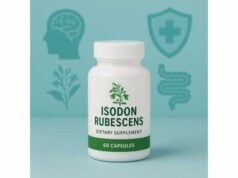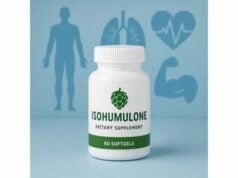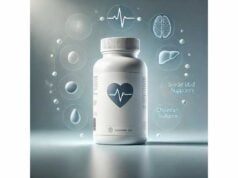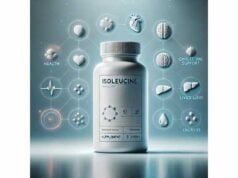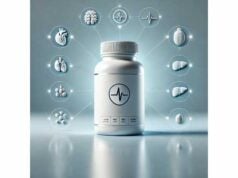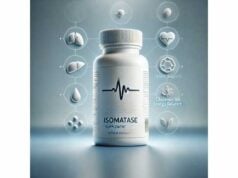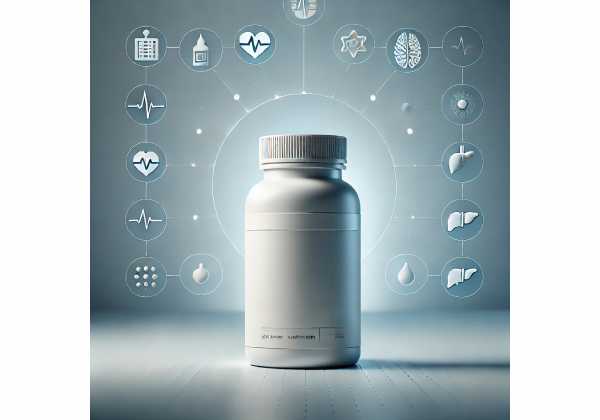
Isparta, a high plateau in southwestern Türkiye, is world famous for fields of Damask rose (Rosa damascena). From these blossoms come several distinct materials sold as “Isparta rose extract”: the aromatic essential oil (steam-distilled), the delicate rose water (hydrosol), the solvent-extracted rose absolute used in perfumery, and polyphenol-rich petal extracts used in skincare and specialty foods. Each has a different chemistry and purpose. This guide explains exactly what you’re buying, where the realistic benefits are (and where marketing gets ahead of evidence), how to use each form safely, what dosage ranges make sense in practice, how to read a label, and who should avoid certain uses. You’ll also find a concise evidence summary so you can match expectations to data before spending more for “Isparta” on the label.
Key Insights
- Primary benefits: soothing aroma, skin-comfort support, antioxidant activity in polyphenol extracts, and a classic perfumery profile.
- Practical adult ranges: facial leave-on 0.1–0.5% essential oil or absolute; body/rinse-off up to 1%; petal extract 0.5–2%; hydrosol may be used neat on intact skin.
- Safety caveat: essential oil/absolute can trigger irritation or allergy; oral ingestion of essential oil is not recommended.
- Avoid concentrated aromatics in pregnancy, in infants/young children, and in anyone with fragrance allergies or highly reactive skin.
Table of Contents
- What is Isparta rose extract and how it works
- What benefits are realistic?
- How to use it: skin, aroma, and food
- Dosage, forms, and practical ranges
- Safety, side effects, and who should avoid
- Quality and labels: choosing true Isparta rose
- Evidence summary: what studies say
What is Isparta rose extract and how it works
The plant and the place. Rosa damascena thrives around Isparta thanks to cool nights, sunny days, and a short harvest window in late spring. Blossoms are hand-picked at dawn, then processed within hours. “Isparta” on a label typically signals origin and the traditional methods used by local cooperatives and distillers.
Four distinct materials sold as “extract”:
- Essential oil (steam-distilled). A concentrated, volatile oil rich in citronellol, geraniol, nerol, plus trace aldehydes and waxy hydrocarbons (nonadecane, heneicosane). This is the classic “rose oil” for perfumery, aromatherapy, and tiny-dose skincare.
- Rose water (hydrosol). The distillation water phase containing phenethyl alcohol and water-soluble aromatics. It’s gentle, lightly fragrant, and commonly used as a facial mist and in culinary sweets.
- Rose absolute (solvent-extracted). A dark, viscous aromatic concentrate retaining heavier molecules. Perfumers prize its depth; skincare formulators use it similarly to essential oil but at very low percentages because it is potent and more allergen-dense.
- Polyphenol-rich petal extract. A non-volatile concentrate (water/ethanol/glycerin extractions) standardized for flavonoids and phenolic acids such as quercetin, kaempferol, and gallic acid. It lacks the strong scent but brings antioxidant capacity useful in serums and gels.
How it might help (mechanisms in plain language).
- Aromatics like citronellol and phenethyl alcohol engage olfactory pathways associated with comfort and relaxation during brief inhalation.
- Polyphenols donate electrons to neutralize free radicals and may calm visible redness by moderating oxidative stress on the skin’s surface.
- Emollient carriers (oils, butters) often included in rose products reduce transepidermal water loss; the rose actives complement—not replace—this base function.
What it does not do. Rose oil is not a drug for depression, infections, or chronic skin diseases. Benefits remain modest and sensory-led unless a formula is built around multiple active ingredients with clinical backing.
What benefits are realistic?
Sensory and mood support (short sessions).
Brief inhalation of rose aroma can reduce state anxiety in some settings and enhance perceived calm before procedures or at bedtime. These effects are modest and short-lived; they complement—not replace—behavioral strategies such as breathing drills, sleep hygiene, and light exposure management.
Skin comfort and glow (topical, diluted).
Leave-on formulas that combine rose aromatics with humectants (glycerin, hyaluronic acid) and barrier lipids (ceramides, squalane) can soften the feel of skin and reduce the look of transient redness. The star here is usually the vehicle and overall formulation; rose adds pleasant scent and ancillary antioxidant activity. Polyphenol-standardized petal extracts can further support antioxidant claims and help defend against environmental stressors when used consistently.
Culinary and cultural uses (rose water).
Hydrosol adds delicate floral notes to desserts and beverages. It is naturally low in calories and brings trace aromatics that can make lighter recipes feel more indulgent, which may help with satisfaction when reducing sugar or fat.
Wellness expectations to temper.
- Anti-aging miracles: improvements are typically cosmetic and incremental, driven by hydration and emollients.
- “Detox” claims: not applicable; rose products do not cleanse the liver, “balance hormones,” or neutralize toxins systemically.
- Acne or rosacea cures: gentle products may soothe, but they do not replace evidence-based treatments like topical retinoids, azelaic acid, or prescription care.
Best-fit users.
People who enjoy floral scents, want a gentle toner or mist, or are building a sensory bedtime routine often appreciate rose. Those with high fragrance sensitivity should choose unscented polyphenol extracts or fragrance-free skincare and skip aromatics entirely.
How to use it: skin, aroma, and food
For skin (intact, non-reactive):
- Hydrosol (rose water): Spray onto clean skin, let sit for 30–60 seconds, then seal with a moisturizer. Use once or twice daily.
- Polyphenol petal extract (serum or essence): Apply 2–3 drops or 1–2 pumps to face and neck after cleansing, before moisturizer. Typical finished-product use levels are 0.5–2% extract.
- Essential oil or absolute (diluted):
- Leave-on facial: aim for 0.1–0.5% in the final product (≈ 1–5 drops per 30 mL carrier).
- Body or rinse-off: up to 1% if tolerated.
- Always patch test a 0.2–0.5% blend on the inner forearm for 24 hours before wider use.
For aroma (brief inhalation):
- Diffuser: 1–3 drops of essential oil or absolute diluted in a neutral solvent or per manufacturer instructions; run 15–30 minutes in a ventilated room.
- Inhalation stick: add 1–2 drops to an aromatherapy wick; sniff intermittently for a few minutes before a stressor or bedtime.
For food (rose water only):
- Stir 1–2 teaspoons into puddings, yogurt, or cold drinks.
- For baking, start with ½ teaspoon in batters for 8–10 servings and adjust to taste.
- Avoid essential oil or absolute in home cooking; potency and allergen content make dosing tricky and easy to overdo.
What not to do:
- Do not ingest essential oil or absolute.
- Do not apply aromatics to broken, irritated, or eczematous skin.
- Do not use concentrated rose products in infants/young children or during pregnancy without clinician guidance.
- Do not rely on rose for sanitation or wound care.
Routine planning tips.
- Treat rose as a supporting actor: pair hydrosol or petal extract with sunscreen by day and with retinoids or barrier-supporting creams by night.
- If you’re scent-sensitive, choose fragrance-free formulas that use rose polyphenol extracts without added aromatics.
Dosage, forms, and practical ranges
1) Essential oil (steam-distilled).
- Leave-on facial skincare: 0.1–0.5%.
- Body/rinse-off products: up to 1%.
- Aroma diffusion: 1–3 drops per session, 15–30 minutes.
- Notes: Highly concentrated; main fragrance allergens include citronellol, geraniol, nerol, and eugenol in trace amounts. Oxidized oil increases irritation risk—buy small bottles and use within 12–24 months of opening.
2) Rose absolute (perfumery concentrate).
- Leave-on facial: 0.05–0.3%; it’s potent and allergen-dense.
- Fine fragrance: according to perfumery standards; sensitive users should avoid.
- Notes: Deeper, honeyed aroma; may contain more potential sensitizers than steam-distilled oil.
3) Rose water (hydrosol).
- Topical: can be used neat as a toner on intact skin.
- Culinary: ½–2 tsp per recipe for 4–10 servings.
- Notes: Store in the refrigerator after opening; discard if the scent turns sour or the liquid clouds.
4) Polyphenol-rich petal extract (cosmetic/food grade).
- Topical finished products: 0.5–2% extract, used once or twice daily.
- Capsules or powders: where available, labels often suggest 250–500 mg/day of standardized petal extract for 4–8 weeks. Evidence for specific health outcomes is limited; treat as a culinary botanical, not a medicine.
- Notes: Fragrance-free users may prefer this form to avoid aromatics.
5) Blends and “rose complexes.”
- Many products pair rose with niacinamide, hyaluronic acid, vitamin E, or ceramides. These often drive the measurable effects; rose provides sensorial appeal and supplementary antioxidant capacity.
When to adjust or stop.
Reduce concentration or discontinue if you notice stinging, redness, new breakouts, headache from scent, nausea, or wheezing. If symptoms persist, consult a clinician and bring the product.
Safety, side effects, and who should avoid
Common, usually mild reactions:
- Skin irritation or contact allergy from fragrance allergens (most often citronellol and geraniol); risk rises with higher percentages and with oxidized oils.
- Sensory headaches or nausea during prolonged diffusion or in poorly ventilated rooms.
- Eye irritation if mists or oils are applied too close to the eyes.
Less common but important:
- Allergic contact dermatitis documented with rose aromatics; sensitized users may react even at low levels.
- Photosensitization is not typical for rose, but any irritated or compromised skin is more susceptible to sun; pair daytime use with broad-spectrum SPF 30+.
Who should avoid or use extra caution:
- Pregnant or breastfeeding individuals: skip concentrated aromatics; hydrosol in skincare may be acceptable for some, but discuss with a clinician.
- Infants and young children: avoid essential oil/absolute; fragrance-free skincare is safer.
- People with fragrance allergies, asthma, or migraine triggered by scents: use fragrance-free polyphenol extracts or avoid rose entirely.
- Highly reactive skin (active eczema, barrier damage): defer aromatics until the barrier is restored.
Interactions and practical warnings:
- Rose products can interfere with sensory testing if you’re evaluating other fragrances or wines; the scent lingers.
- Do not use rose aromatics as a disinfectant or on wounds.
- Ingestion of essential oil/absolute is not recommended; accidental ingestion warrants poison control guidance.
First-aid guidance:
- On skin (over-strong blend): wipe with carrier oil (e.g., squalane or olive oil), then wash with mild cleanser; water alone can spread aromatics.
- In eyes: flush with lukewarm water for several minutes and seek care if burning persists.
- Inhalation discomfort: move to fresh air; stop diffusion.
Bottom line: keep concentrations low, sessions short, and storage cool and dark. Sensitized users should choose fragrance-free options or avoid rose.
Quality and labels: choosing true Isparta rose
Identity matters. Look for the Latin name Rosa damascena and country/region of origin (Isparta/Türkiye). “Bulgarian rose” and “Isparta rose” are both R. damascena; differences reflect terroir, harvest timing, and processing rather than species.
Chemistry transparency. Reputable vendors share GC–MS profiles for essential oil/absolute showing key aromatic percentages (citronellol, geraniol, nerol) and heavier hydrocarbons (nonadecane, heneicosane) that influence texture and longevity. For polyphenol extracts, seek standardized markers (e.g., total phenolics as gallic acid equivalents, quercetin/kaempferol content).
Packaging and freshness.
- Essential oil/absolute: amber glass with reducers; buy small sizes you’ll finish in 12–24 months.
- Hydrosol: opaque or amber bottles; refrigerate after opening.
- Polyphenol extracts: protect from heat and light; check best-by dates.
Purity and safety.
- Essential oil labeled “100%” should list only Rosa damascena oil. Pre-diluted products must list carrier oils and the percentage of rose material.
- Check for IFRA-aligned allergen disclosure (citronellol, geraniol, eugenol, farnesol, etc.) on leave-on products.
- Be wary of synthetic adulteration (cheap citronellol/geraniol without rose’s nuanced minor components). Unusually low price or flat scent are red flags.
Claims realism.
Trust labels that avoid medical promises and provide clear dilution/use instructions. Marketing that claims detox, hormone balancing, or infection treatment is not evidence-based.
Sourcing ethics.
Isparta’s rose economy relies on smallholder pickers and cooperatives. Brands that disclose fair pricing, seasonal harvest practices, and environmental stewardship help sustain this heritage crop.
Evidence summary: what studies say
Composition and chemistry.
Comprehensive reviews describe Rosa damascena essential oil as citronellol-dominant with meaningful geraniol and nerol, and rose water as dominated by phenethyl alcohol. Hydrocarbons such as nonadecane and heneicosane contribute to fixative qualities. These profiles vary with terroir, harvest timing, and post-harvest handling.
Skin-relevant antioxidant activity.
Petal extracts contain quercetin, kaempferol, rutin, and gallic acid, which show radical-scavenging and antioxidant effects in vitro. In finished skincare, these can complement humectants and emollients to support barrier comfort and reduce the appearance of dullness due to environmental stressors.
Aromatherapy findings.
Small randomized and controlled studies suggest short-term reductions in state anxiety and improvements in perceived sleep quality with rose aroma exposure in specific settings (pre-procedure, shift-work). Effects are modest and time-limited, aligning with a supportive, comfort-oriented use rather than disease treatment.
Safety data.
Cosmetic safety assessments compile human patch-test data and case reports of contact allergy to rose aromatics, mainly tied to citronellol and geraniol. Following low leave-on percentages, avoiding oxidized oils, and patch testing reduce risk. Phototoxicity is not characteristic for rose, but irritation increases after oxidation or at high concentrations.
Gaps and limits.
There are no large clinical trials showing disease-specific benefits from oral rose essential oil or absolute. Most skin benefits arise from formulation synergy (hydration/barrier support) plus sensory experience. “Isparta” origin implies craft and terroir, not automatic superiority for health outcomes.
Practical takeaway.
Use Isparta rose products for sensory enjoyment, skin comfort, and gentle antioxidant support. Keep concentrations conservative, choose transparent suppliers, and prioritize overall skincare and wellness routines known to work.
References
- Rose Flowers—A Delicate Perfume or a Natural Healer? — 2021 (Review)
- Therapeutic efficacy of rose oil: A comprehensive review of clinical evidence — 2017 (Review)
- Volatile constituents of essential oil and rose water of Rosa damascena Mill. from India — 2011 (Analytical Study)
- Safety Assessment of Rosa damascena-Derived Ingredients as Used in Cosmetics — 2022 (Safety Assessment)
- Phytochemical Profile, Antioxidant Potential, Antimicrobial and Cytotoxic Activity of Rosa damascena Petal Extracts — 2023 (Study)
Medical Disclaimer
This article provides general information and is not a substitute for individualized medical advice, diagnosis, or treatment. Do not ingest rose essential oil or absolute. Avoid concentrated aromatics during pregnancy, while breastfeeding, in infants and young children, and if you have fragrance allergies, asthma, or highly reactive skin. Patch test new products, discontinue use if irritation occurs, and consult a qualified clinician for persistent symptoms or questions.
If you found this guide useful, please consider sharing it on Facebook, X (formerly Twitter), or your preferred platform, and follow us for more people-first, evidence-aware content. Your support helps us continue creating high-quality resources.

